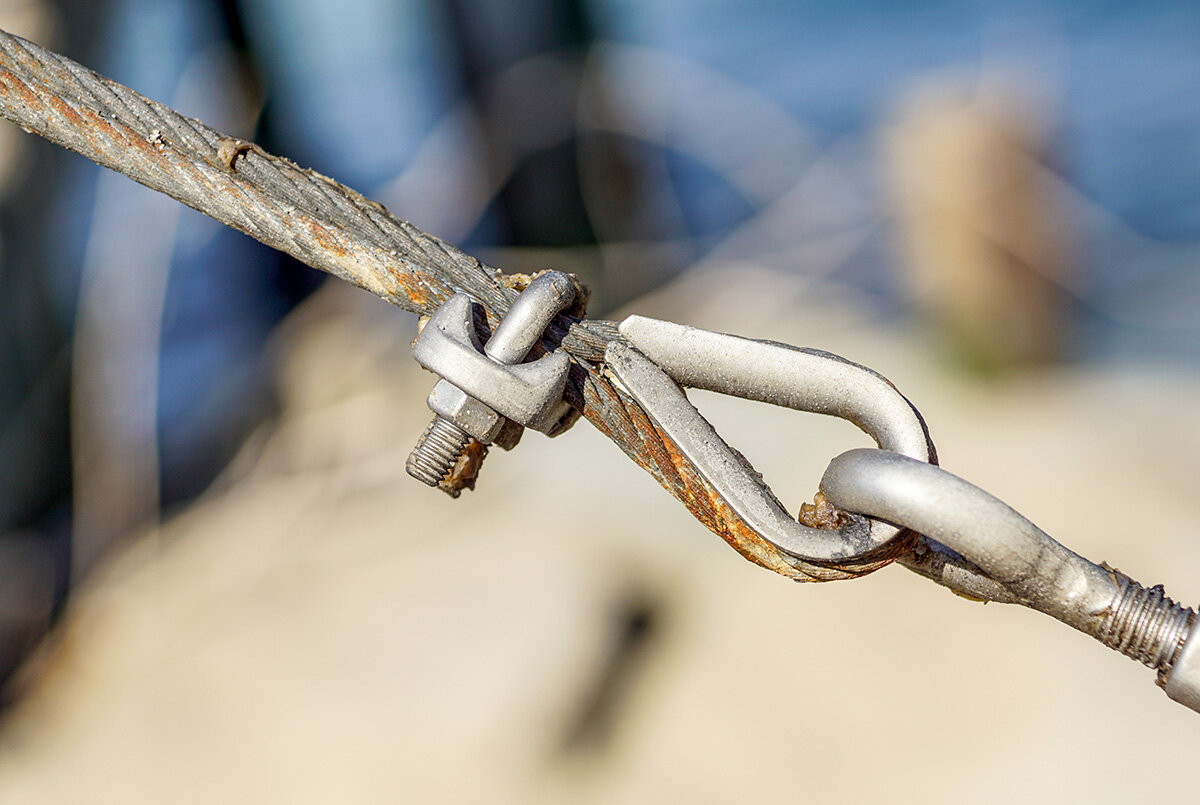
Toolbox Talk: Wire Rope Inspection
A regular inspection program of wire rope is essential for proper rigging safety. OSHA standard 1926.550(7) provides guidance. The rope needs to be checked daily during normal operations and inspected weekly. If the wire rope has not been used for a month, a complete thorough inspection needs to be conducted before it is returned to service. This type of thorough inspection is needed for all ropes in use every month. Items to look for include the following:
1. Broken Wires: In running ropes, six randomly distributed broken wires in one lay or three broken wires in one strand in one lay require the removal of the rope from service. In standing ropes, more than two broken wires in one lay in sections beyond the end connectors or more than one broken wire at an end connection requires the removal of the rope from service.
2. Worn and Abraded Wires: If these worn areas, indicated by a shiny appearance, exceed one-third of the diameter of the wires, replacement is needed.
3. Reduction in Rope Diameter: Reduction in rope diameter can be caused by crushing or by the core, inner wire failure, abrasion of outside wires, or a loosening of the rope lay. Wear of one-third of the original diameter of the outside individual wires is cause for replacement.
4. Rope Stretch: Rope stretch by more than the typical range of six inches per 100 feet of six-strand rope or 10 inches per 100 feet of eight-strand rope would require replacement. This allows for the constructional stretch typical at the initial periods of all steel ropes and is permanent.
5. Corrosion: When pitting is observed, consider replacing the rope. This is largely due to the occurrence of non-visible internal rusting. The internal rusting increases wear due to the abrasion from wires rubbing against each other.
6. Crushed, Flattened, or Jammed Strands: Replace the rope when these conditions are indicated due to the dangerous situation they create.
7. High Stranding & Inlaying: This requires the replacement of the rope or resetting the rope lay.
8. Bird Caging: When this occurs, the rope must be replaced.
9. Kinks: Since kinks are permanent, the rope needs to be taken out of service. Running a cable through a shackle instead of a sheave will cause this.
10. Core Protrusion: Again, the rope must be taken out of service if this condition occurs. It is generally caused by shock loads and/or torsion imbalance.

